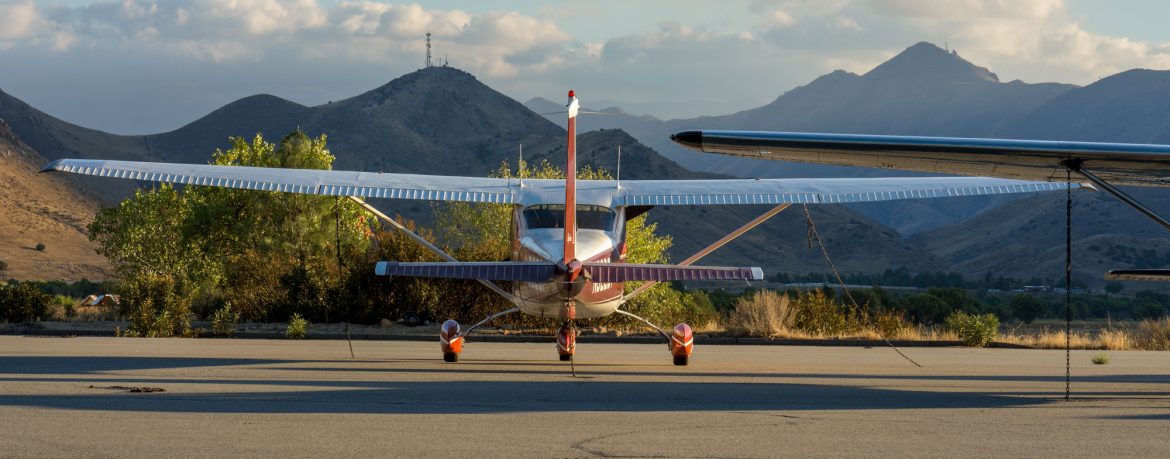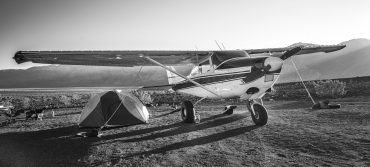A Guide to Cessna 182 Mods
A current, source-checked rundown of the most effective engine, prop, aerodynamic, landing-gear, fuel, avionics, and interior upgrades for the Cessna 182—written for owners who want confident, compliant improvements.
From straight-tail classics to late-model T182T, the Cessna 182 has one of the richest upgrade ecosystems in general aviation. This guide focuses on modifications that consistently deliver value, performance, or reliability—paired with practical shop notes about paperwork, weight-and-balance, and mission fit.
Powerplant Upgrades
NorthPoint XP470 (formerly PPonk)
The NorthPoint XP470 conversion (successor to PPonk) is a high-demand upgrade for 182s originally equipped with O-470 series engines. The package is essentially a carbureted big-bore configuration using 520-cubic-inch cylinders on the 470 case, retaining the stock mount, baffling, exhaust, and cowling. Owners choose it for materially stronger climb and density-altitude performance while keeping carb simplicity.
- What you feel: Crisp acceleration, better climb and short-field punch, improved high-DA margin.
- Consider: Propeller pairing, fuel flow setup, and cooling/baffling condition to realize benefits.
Tuned Exhaust: Power Flow
Power Flow replaces the stock high-back-pressure muffler with a tuned system that improves scavenging. Field results typically show improved climb, better throttle response, and modest cruise gains when rigging and engine health are solid.
- Install Time: ~6–8 hours typical
- Notes: Re-torque after heat cycles; verify cowling clearance and heat shielding around cabin heat/muffs.
Other Big-Bore Conversions
IO-520/IO-550 conversions are available from specialty STC holders. Benefits depend on the STC details, prop model, cooling kit, and AFMS limitations. We brief owners from the specific data set that applies to their serial number.
Propeller Upgrades
Modern composite propellers reduce rotating mass and smooth the engine/airframe interface. Many 182 variants are eligible for MT and Hartzell models.
- Composite 3-Blade (e.g., MT 83″): Excellent acceleration and short-field feel; helpful CG shift aft; often 15–20 lb lighter than legacy metal props.
- Composite 2-Blade (e.g., Hartzell Trailblazer): Strong climb and balanced cruise; durable nickel leading edges for FOD resistance.
- Shop Note: Match the prop governor and spinner to the prop STC; confirm approval basis for your exact engine/airframe combo.
Aerodynamic & STOL Upgrades
Sportsman STOL Leading Edge
The Sportsman STOL leading-edge cuff re-profiles the wing and often includes wingtips and aileron gap seals. Pilots report a friendlier stall break, lower stall speed, and improved low-speed authority—especially noticeable in high-weight/high-DA departures and steep approaches.
Vortex Generators (VGs)
Micro AeroDynamics VG kits are approved across the 182 family. Expect reduced stall speed, better elevator/aileron effectiveness at high angles of attack, and improved crosswind handling. Installation is typically a one-day job with precise layout and adhesive cure time.
Wing Extensions, Gap/Flap Seals
Wing-span extensions (e.g., WingX) and comprehensive gap/flap-seal kits can increase lift and clean up leakage. Gains vary with configuration; we assess them against your runway lengths, typical weights, and cruise priorities.
Tip: Aerodynamic mods are multiplicative. A tuned exhaust that helps climb pairs well with a STOL kit and a light composite prop. We model the stack, then flight-test and document pre/post numbers.
Landing Gear & Rough-Field Options
Oversize Tires & Bushwheels
Many 182s run 26" Bushwheels on the mains and a larger nose tire with an approved heavy-duty nose fork. Expect better prop clearance and surface compliance with a small cruise-speed penalty.
Heavy-Duty Nose Forks & Pods
Airglas and similar STCs provide a robust nose fork for larger tires. Cargo pods add utility but affect drag and W&B—good planning item for backcountry or survey missions.
Taildragger Conversions
Available but significant: excellent rough-field geometry with tradeoffs in ground handling, pavement manners, and sometimes insurance. Plan on meaningful logbook and training updates.
Fuel System & Range Enhancements
Long-Range Tanks
Older 182s can be upgraded to higher usable fuel (commonly to 84 gal usable) under STC. Best for IFR and remote backcountry where fuel planning drives mission success.
Monarch Premium Fuel Caps
Raised-inlet Monarch caps and improved sealing help mitigate water ingress and venting issues—simple, high-ROI reliability upgrade.
Avionics & Electrical Modernization
- Primary Flight Displays: Garmin G3X Touch, Dynon SkyView HDX, or Aspen integrated with legacy or new IFR navigators.
- WAAS IFR GPS + ADS-B: GTN/IFD navigators paired with compliant transponders and traffic/weather display.
- LED Exterior/Interior Lighting: Lower load, higher reliability and conspicuity.
- Lithium Starting Batteries (e.g., EarthX): Notable weight savings and strong cranking; install strictly per STC/ICA and AFMS limitations.
Interior & Comfort
Targeted soundproofing, modern seats/foam, and refined side panels reduce fatigue on long legs. Rosen-style sun visors and interior LEDs are inexpensive upgrades that owners appreciate on day one.
Weight & Balance, Data, and Paperwork
- Every alteration is logged with updated equipment list and W&B. CG shifts (e.g., composite prop + lithium battery) are verified against the POH/AFMS.
- STC and AFMS documents are incorporated into the records; Instructions for Continued Airworthiness (ICA) are filed for maintenance reference.
- For any non-STC alteration, we secure the appropriate approval path (e.g., FAA Form 337/field approval) before return to service.
How We Build the Right Mod Stack
- Mission Analysis: runway lengths, density altitude, payload, typical cruise.
- Configuration Audit: current engine/prop, cooling, rigging, and maintenance status.
- Stack Modeling: interactions among exhaust, prop, STOL, tires, and fuel.
- Paperwork Plan: STC/AFMS/ICA/337 for your serial number.
- Flight Test & Documentation: we record pre/post numbers and deliver them with your records.
Summary
The Cessna 182 rewards thoughtful, mission-driven upgrades. Whether your priority is short-field, cruise efficiency, or all-around capability, the right combination of powerplant, propeller, aerodynamic, and systems improvements can transform the airplane without compromising the Skylane’s trademark stability and payload.



